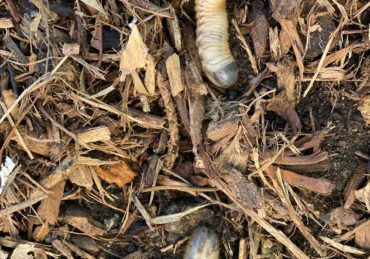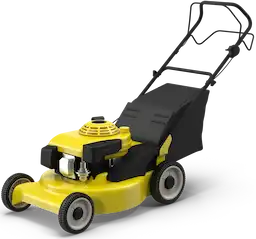Stringing a weed eater is a simple task that enhances its performance. Begin by making sure the trimmer is powered off and cool. For single-hole models, remove the cap, insert the new trimmer line into the spool, and wind it according to the directional arrows, leaving 4-6 inches free. In two-hole models, cut two equal lengths of string, insert them into their respective holes, and wind tightly. For bump-feed or auto-feed models, follow similar winding processes, making certain the spool is facing the correct direction. Completing these steps will guarantee effective trimming, and you’ll uncover further tips for ideal usage.
Getting Started with Stringing Your Weed Eater
Before starting the stringing process, it is essential to choose the right trimmer line that matches your weed eater’s specifications. Prioritize safety by ensuring the trimmer is powered down and thoroughly cleaned to avoid any potential hazards. With these foundational steps in place, you can proceed confidently to string your weed eater effectively.
Choose the Right Trimmer Line
Selecting the appropriate trimmer line is essential for maximizing the performance of your weed eater and ensuring efficient cutting. First, consult your user manual to determine the correct line size for your specific weed eater model, with common diameters including .095, .080, and .065 inches. Furthermore, consider the line shape; while round trimmer lines are standard, twisted, square, or serrated lines can enhance cutting power for tougher weeds. It is advisable to choose a replacement string that is compatible with your machine to guarantee peak performance. For auto-feed trimmers, replacing the entire spool may be more efficient than merely changing the string. Regularly inspect your trimmer line and replace it every three months or sooner if worn.
Safety First: Power Down and Clean the Weed Eater
Proper maintenance and string replacement begin with prioritizing safety by ensuring the weed eater is powered down, unplugged, or that the battery is removed to prevent any accidental activation during the process. Moreover, allow the engine to cool down completely to avoid burns from hot components. As part of the maintenance routine, take the opportunity to clean the trimmer head while replacing the string. Use a cloth or brush to remove debris, grass clippings, and any buildup from the trimmer head, ensuring that all moving parts are unobstructed. Regular cleaning not only enhances performance but also provides an opportunity to inspect for any wear or damage to the weed eater’s components, ultimately extending its lifespan.
Easily hire the best lawn & landscape pros working in your neighborhood.
How to String a Weed Eater (Single-Hole Model)
To string a weed eater with a single-hole model, begin by removing the cap and spool from the trimmer head. Next, carefully insert and wind the new string according to the specified direction, ensuring the correct length is left free for attachment. Finally, reattach the spool and cap securely to complete the process.
Step 1: Remove the Cap and Spool
Carefully flip the weed eater upside down to gain easier access to the cap covering the spool of wire. Locate the tabs on the cap and either press them or unscrew it counterclockwise to remove the cap. If the cap is stuck due to age or debris, apply gentle pressure while twisting to aid in removal. Once the cap is off, gently pull out the spool from the housing, taking care to note its orientation for reinstallation. Before proceeding, inspect the spool for any damage or debris to verify it is in good condition. With the cap and spool removed, you can now take out the old string, preparing for the next steps in the stringing process.
Step 2: Insert and Wind the New String
Insert one end of the new trimmer line into the designated slot on the spool, making sure it is securely anchored for effective winding. Next, begin to wind the string evenly around the spool in the direction of the arrows marked on the spool. This directional guidance is significant, as winding against the arrows can lead to tangling and improper functionality. Maintain consistent tension while you wind the string to guarantee it coils tightly, which will facilitate smooth feeding during operation. It is essential to avoid overlapping the string to prevent entanglement. Finally, leave approximately 4 to 6 inches of string unwound, allowing for easy attachment to the trimmer head and assuring peak performance.
Step 3: Reattach the Spool and Cap
After ensuring the new string is properly wound and positioned, reattach the spool to the trimmer housing by aligning it with the designated opening. It’s essential to verify that the spool is facing the correct direction, as indicated by the directional arrows. Carefully thread the string through the opening, ensuring it is not twisted and flows freely. Once the string is properly positioned, put the string into place and press down firmly on the spool until it locks securely into position. This prevents any movement during operation. Finally, reattach the cap by aligning it with the spool and pressing or screwing it back on until you hear a click, confirming it is securely fastened.
How to String a Weed Eater with Two Holes
Stringing a weed eater with two holes requires careful preparation and precise winding techniques to guarantee peak performance. The process involves measuring and cutting the trimmer line, correctly winding each string onto the spool, and properly feeding the lines through the designated eyelets. Following these steps will facilitate a smooth reattachment of the spool cap, ensuring the trimmer operates effectively.
Step 1: Preparing and Measuring the Trimmer Line
To effectively prepare the trimmer line for a weed eater equipped with two holes, begin by measuring and cutting a length of 20-25 feet of replacement string. This measurement is critical as it guarantees sufficient line for peak operation while preventing excess waste. Once you have your replacement string, insert one end into the first hole on the spool and pull it through until equal lengths are achieved on both sides. If your trimmer features a second hole, repeat the process for the other side. It is essential to maintain equal lengths for balanced performance. Proper preparation and measuring of the trimmer line lay the foundation for a successful stringing process, guaranteeing efficient trimming.
Step 2: Winding Each String Correctly
Winding each string correctly is essential for guaranteeing peak performance and efficiency in a weed eater equipped with two holes. Begin by cutting two lengths of new line, typically between 10 to 20 feet, depending on your model’s specifications. Insert one end of each string into the designated holes of the string trimmer head, following the directional arrows on the spool. Carefully wind the string tightly around the spool, ensuring that the coils remain neat and parallel to prevent tangling. Leave approximately 4 to 6 inches of string unwound after winding for ideal feeding during operation. Once both strings are properly wound, ensure they are securely positioned in their respective channels before reattaching the spool cap to maintain stability during use.
Easily hire the best lawn & landscape pros working in your neighborhood.
Step 3: Feed Lines Through Eyelets and Reattach the Cap
Feeding the lines through the eyelets is an essential step in ensuring the efficient operation of a weed eater equipped with two holes. Begin by taking the ends of each string and carefully insert them into the respective eyelets on the spool, making sure to feed the lines from the inside out. This alignment is critical for peak performance. Once the strings are securely positioned, wind them tightly around the spool in the indicated direction, maintaining tension to prevent tangling. After winding, leave approximately 4 to 6 inches of string protruding from each eyelet. Finally, reattach the cap securely, ensuring it locks into place. This step is important for holding the spool and strings tightly, facilitating smooth operation of the weed eater.
How to Restring a Bump-Feed Weed Eater
When restringing a bump-feed weed eater, it is crucial to understand the mechanism that allows for the automatic release of trimmer line with a simple bump on the ground. The process involves carefully removing the spool cap and replacing the old string with new line while adhering to the correct winding direction. Following these steps will guarantee peak performance and efficiency of your weed eater during maintenance tasks.
Step 1: Understand the Bump-Feed Mechanism
Understanding the bump-feed mechanism is vital for effectively restringing a weed eater, as it allows for manual string advancement by simply tapping the trimmer head against the ground. This design utilizes a spool that releases additional string when the trimmer is bumped, ensuring continuous cutting without the need for frequent pauses. To maintain ideal performance, it is important to wind the new string correctly in the specified direction indicated on the spool. Incorrect winding can lead to tangling or improper function. Familiarizing yourself with the bump-feed system will facilitate a smoother restringing process, ultimately enhancing the efficiency and longevity of your weed eater as you prepare for your trimming tasks.
Step 2: Stringing the Bump-Feed Spool
Carefully follow the steps to restring the bump-feed spool, guaranteeing a seamless operation of your weed eater. Begin by powering down the trimmer and removing the spool cap. Take note of the winding direction indicated by arrows on the spool as you remove the old string. Clean the spool, discarding remnants and inspecting for damage. Cut a length of new string between 10 to 20 feet, depending on your model. Insert one end into the designated slot and wind the new string tightly in the correct direction, guaranteeing there are no overlaps. Trim excess string to leave about 4-6 inches free. Finally, reattach the spool and secure the cap to guarantee proper functionality before use.
How to String an Auto-Feed Weed Eater
To effectively string an auto-feed weed eater, begin by removing the old string and preparing the spool for new line. It is essential to pay attention to the winding direction as you insert and wind the new string, ensuring proper functionality. Following these steps will help maintain the equipment’s performance and extend its lifespan.
Step 1: Removing the Old String
Removing the old string from an auto-feed weed eater is essential for guaranteeing the tool operates efficiently and effectively. Begin this process by verifying the trimmer is powered off and cool. Carefully remove the cap covering the spool, either by pressing the tabs or unscrewing it counterclockwise, and set it aside. Next, gently pull out the spool from the trimmer head, paying attention to the winding direction of the old string for future reference. Inspect the spool for any damage or debris, and verify that all remnants of the old string are thoroughly cleared. If necessary, consider replacing the entire spool to maintain peak performance, especially if the model features an auto-feed mechanism.
Step 2: Insert and Wind the New String
With the old string completely removed and the spool cleaned, the next step involves inserting and winding the new string onto the spool. Begin by cutting 20-25 feet of replacement string to guarantee adequate length. Insert one end of the new string into the designated slot on the spool, guaranteeing a secure attachment. Carefully wind the string tightly around the spool in the direction indicated by the arrows, making sure to avoid overlaps to prevent tangling. If your model features dual strings, repeat this process for the second string, guaranteeing both are of equal length. Leave about 4-6 inches of string unwound for easy attachment to the trimmer and to facilitate proper feeding during operation.
Tips for Extending the Life of Your Weed Eater String
To maximize the lifespan of your weed eater string, it is crucial to select the right type and gauge of string as specified in the user manual. Furthermore, avoiding common mistakes during the stringing process can prevent premature wear and guarantee peak performance. By following these guidelines, you can effectively extend the life of your trimmer line and enhance your overall trimming experience.
Easily hire the best lawn & landscape pros working in your neighborhood.
Pro Tips on String Selection
Selecting the appropriate string for your weed eater is essential for maximizing its efficiency and extending the lifespan of the trimmer line. For peak performance, choose a string trimmer line that adheres to the specifications outlined in your user manual, typically ranging from .065 to .095 inches. While round strings are suitable for general use, consider twisted or serrated options for tougher weeds. Regularly replace the string to maintain cutting effectiveness; ideally, every three months for standard use or sooner for heavy-duty tasks. Furthermore, store your weed whackers in a cool, dry place to prevent moisture-related degradation. Inspect the string frequently for wear, and replace the string immediately if fraying or tangling occurs to guarantee consistent operation.
Avoiding Common Stringing Mistakes
Avoiding common stringing mistakes is essential for extending the life of your weed eater string and ensuring ideal cutting performance. First, always use the correct gauge and type of string specified in the user manual to protect the trimmer head. When replacing the old line, avoid over-winding; leaving adequate space allows for smooth line movement and prevents tangling. Pay close attention to the winding direction on the spool—incorrect winding can lead to string jams and inefficient operation. Regularly inspect the string condition, and promptly change the string when you notice signs of wear or deformation. Furthermore, keep the trimmer head and spool clean to avoid debris buildup, which can hinder string feeding and reduce overall performance.
Frequently Asked Questions
How to Load a Weed Eater Spool?
To load a weed eater spool, first remove the spool from the trimmer head. Then, cut the appropriate length of trimmer line, insert it into the spool, and wind it tightly in the indicated direction.
How to Install String Trimmer Line?
To install string trimmer line, remove the spool cap, extract the old line, and insert the new line according to the specified winding direction, ensuring proper tension. Reattach the spool cap securely before testing functionality.
How to Wind a Two String Weed Eater?
To wind a two-string weed eater, cut two lengths of trimmer line, insert them into the spool notches, and wind in the indicated direction, ensuring even tension and appropriate length for smooth operation during use.
How to String a Bump Feed Trimmer?
To string a bump feed trimmer, remove the spool cap, extract the old line, and insert a new 20-25 feet line, winding it tightly in the indicated direction before reassembling the spool and testing functionality.





